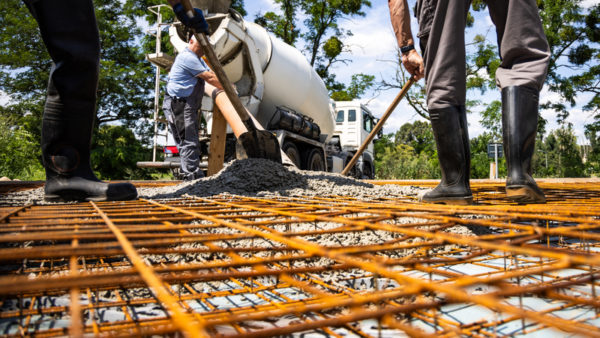Following President Xi Jinping’s surprise announcement that China would aim to be carbon neutral by 2060, a Chinese climate research institute has set out a roadmap to achieving that goal.Â
Xi’s pledge, made during his video speech to the UN General Assembly on 22 September, said the country would fully offset its carbon emissions within 40 years. “We aim to have our carbon dioxide emissions peak before 2030 and achieve carbon neutrality before 2060,” he said.Â
The announcement was welcomed [https://www.sciencemag.org/news/2020/09/can-china-worlds-bigger-coal-consumer-become-carbon-neutral-2060] by climate scientists around the world as a “very significant” step, and one that may prevent global warming from passing the 2°C threshold set by the 2016 Paris agreement.
A big ask
However, commentators also noted the immense scale of the task, given China’s reliance on fossil fuel for electricity and transportation. From 1990 to 2018, China increased its coal consumption from 1 billion tonnes to 4.6 billion. In 2018, coal made up 59% of China’s energy use, or more than the rest of the world combined. [https://chinapower.csis.org/energy-footprint/]
At present, China produces about 10 billion tons of carbon dioxide a year, about 28% of the global total, and almost double that of the US – [https://www.ucsusa.org/resources/each-countrys-share-co2-emissions] although America’s cumulative emissions are about twice those of China. [https://www.aljazeera.com/economy/2020/9/23/net-zero-by-2060-thats-chinas-bold-new-carbon-emissions-goal]
Now the Tsinghua University’s Institute of Energy, Environment and Economy (Tsinghua 3E) has set out a plan for how Xi’s goal might be achieved.Â
Quadruple the nuclear
The institute, which works closely with the Ministry of Ecology and Environment, envisages a gradual transition over the next 15 years, with a rapid acceleration after 2035.Â
Zhang Xiliang, the institute’s director, said in a webinar that coal would be removed from the energy mix by 2050. According to He Jiankun, another Tsinghua researcher, this would require investment in the renewables and nuclear energy in the order of $15 trillion over the next 30 years.Â
Tsinghua 3E estimates that China’s demand for energy will double between 2025 and 2060. To meet this need, and to replace coal and gas, China’s nuclear capacity will quadruple between 2025 and 2060, taking it to about 200GW, or twice the size of the US’ present fleet.
Following President Xi Jinping’s surprise announcement that China would aim to be carbon neutral by 2060, a Chinese climate research institute has set out a roadmap to achieving that goal.Â
Xi’s pledge, made during his video speech to the UN General Assembly on 22 September, said the country would fully offset its carbon emissions within 40 years. “We aim to have our carbon dioxide emissions peak before 2030 and achieve carbon neutrality before 2060,” he said.Â
The announcement was welcomed by climate scientists around the world as a “very significant” step, and one that may prevent global warming from passing the 2°C threshold set by the 2016 Paris agreement.
A big ask
However, commentators also noted the immense scale of the task, given China’s reliance on fossil fuel for electricity and transportation. From 1990 to 2018, China increased its coal consumption from 1 billion tonnes to 4.6 billion. In 2018, coal made up 59% of China’s energy use, or more than the rest of the world combined.
At present, China produces about 10 billion tons of carbon dioxide a year, about 28% of the global total, and almost double that of the US – although America’s cumulative emissions are about twice those of China.
Now the Tsinghua University’s Institute of Energy, Environment and Economy (Tsinghua 3E) has set out a plan for how Xi’s goal might be achieved.Â
Quadruple the nuclear
The institute, which works closely with the Ministry of Ecology and Environment, envisages a gradual transition over the next 15 years, with a rapid acceleration after 2035.Â
Zhang Xiliang, the institute’s director, said in a webinar that coal would be removed from the energy mix by 2050. According to He Jiankun, another Tsinghua researcher, this would require investment in the renewables and nuclear energy in the order of $15 trillion over the next 30 years.Â
Tsinghua 3E estimates that China’s demand for energy will double between 2025 and 2060. To meet this need, and to replace coal and gas, China’s nuclear capacity will quadruple between 2025 and 2060, taking it to about 200GW, or twice the size of the US’ present fleet.

Coal has been a major factor in China’s severe air pollution. Coal ash at Pingyao, in Shanxi Province, northern China (Dreamstime)
Peaking late
According to the institute’s calculations, China’s annual carbon emissions will peak at 10.2 billion tons before falling to about 9 billion tons in 2035 before decline to 3 billion by 2050, 900 million by 2055 and 200 million by 2060. This residual amount would then have to offset by carbon capture and sequestration to meet Xi’s timetable.
The share of non-fossil fuels in total energy demand will grow from about 15% last year to 20% by 2025, 24% in 2030, 62% in 2050 and 84% in 2060.
Non-fossil fuel energy would have to fill 20% of demand by 2025, five years earlier than previously thought. Bloomberg notes that shares in Chinese renewable energy companies have soared following Xi’s speech. [https://tinyurl.com/y2rhknql]
The implication of this timetable would be that China will call a halt to the construction of further coal-fired power stations, as these would have to be closed down 30 years, which Bloomberg notes is typically the time needed to recoup their capital cost.
Weaknesses and strengths
This would represent a massive shift in the country’s energy policy. The Guardian reported last year that in the 18 months between 2018 and June 2019, China increased its coal-generating capacity by 43GW, 5GW more than all the power stations of Sweden combined. [https://www.theguardian.com/world/2019/nov/20/china-appetite-for-coal-power-stations-returns-despite-climate-pledge-capacity]
However, in some respects, China is well placed to increase its non-fossil sectors since the country is a global leader in solar and wind power.Â
In 2017 China was the first country to pass 100GW of cumulative installed photovoltaic capacity, and by the end of 2018, that reached 174GW.Â
It is also the largest generator of wind power, with an installed capacity of about 250GW. This is likely to take up much of the slack from a decarbonisation of the country’s energy sector: it is estimated China has about 2,380GW of exploitable capacity on land, mainly in the north and west of the country, and 200GW on the sea.
Finally, China’s electric vehicle market is larger than the rest of the world combined, creating the industrial basis for a growth in low energy transportation.Â
Image: China has around 2.5 trillion watts of potential wind production – most of it in the wrong place (Global Wind Atlas/CC BY 4.0) [https://creativecommons.org/licenses/by/4.0/]Â
Further reading:Â
China’s wind farms now produce more energy than all of America’s nuclear reactors
https://www.globalconstructionreview.com/news/chinas-wind-farms-now-produce-m8o8r8e-e8n8e8r8g8y/
China announces plans for world’s biggest windfarm on Mongolian border
https://www.globalconstructionreview.com/news/china-announces-plans-worlds-biggest-windfarm-mong/
Sisi hopes to cement grip on power with infrastructure programme
https://www.globalconstructionreview.com/markets/sisi-hopes-cement-grip-power-infrastructure-bonanz/
China’s nuclear power company plans $2.5bn renewables investment in Inner Mongolia
https://www.globalconstructionreview.com/news/chinas-nuclear-power-company-plans-25bn-renewables/
Peaking late
According to the institute’s calculations, China’s annual carbon emissions will peak at 10.2 billion tons before falling to about 9 billion tons in 2035 before decline to 3 billion by 2050, 900 million by 2055 and 200 million by 2060. This residual amount would then have to offset by carbon capture and sequestration to meet Xi’s timetable.
The share of non-fossil fuels in total energy demand will grow from about 15% last year to 20% by 2025, 24% in 2030, 62% in 2050 and 84% in 2060.
Non-fossil fuel energy would have to fill 20% of demand by 2025, five years earlier than previously thought. Bloomberg notes that shares in Chinese renewable energy companies have soared following Xi’s speech.
The implication of this timetable would be that China will call a halt to the construction of further coal-fired power stations, as these would have to be closed down 30 years, which Bloomberg notes is typically the time needed to recoup their capital cost.
Weaknesses and strengths
This would represent a massive shift in the country’s energy policy. The Guardian reported last year that in the 18 months between 2018 and June 2019, China increased its coal-generating capacity by 43GW, 5GW more than all the power stations of Sweden combined.
However, in some respects, China is well placed to increase its non-fossil sectors since the country is a global leader in solar and wind power.Â
In 2017 China was the first country to pass 100GW of cumulative installed photovoltaic capacity, and by the end of 2018, that reached 174GW.Â
It is also the largest generator of wind power, with an installed capacity of about 250GW. This is likely to take up much of the slack from a decarbonisation of the country’s energy sector: it is estimated China has about 2,380GW of exploitable capacity on land, mainly in the north and west of the country, and 200GW on the sea.
Finally, China’s electric vehicle market is larger than the rest of the world combined, creating the industrial basis for a growth in low energy transportation.Â
Image: China has around 2.5 trillion watts of potential wind production – most of it in the wrong place (Global Wind Atlas/CC BY 4.0)
Further reading:Â








Good for China. Good for Mother Earth. Obs. China is the leader is making machines that make Steel Structural Insulated Panels for residential construction. They made a scientific study showing that building with them is better than anything else. What projects are underway or planned to build with them en mass? I hope they lead the world in this.